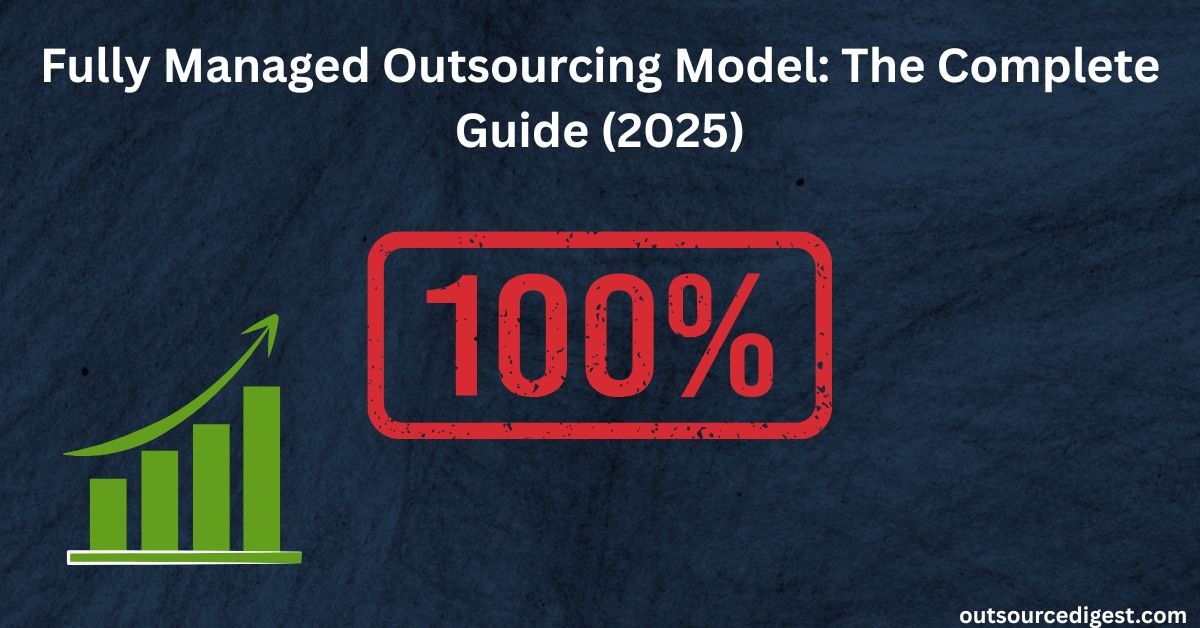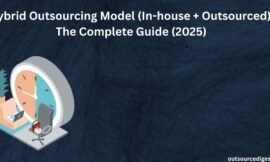For many small and medium-sized businesses (SMBs), managing customer support in-house can feel overwhelming. From recruiting agents and setting up training programs to investing in software and monitoring daily performance, the workload is heavy. When internal resources are limited, the Fully Managed Outsourcing Model becomes an attractive solution.
In this model, the outsourcing provider takes complete responsibility for end-to-end support operations. This includes hiring, onboarding, training, managing technology stacks, and overseeing daily workflows. As a result, businesses can focus on growth and strategy while ensuring their customers receive high-quality service.
This guide explains how the Fully Managed Outsourcing Model works, its advantages and drawbacks, and how to determine whether it’s the right fit for your company.
What Is the Fully Managed Outsourcing Model?
The Fully Managed Outsourcing Model is a comprehensive outsourcing approach where the vendor assumes total ownership of customer support operations. Instead of co-managing with the client, the provider delivers a turnkey solution:
- Recruitment and Hiring: The provider sources and hires qualified agents.
- Training: Agents receive brand-specific training and ongoing coaching.
- Technology Stack: The provider supplies or integrates necessary tools (CRMs, ticketing systems, telephony, AI chatbots).
- Operations Management: Supervisors and quality assurance teams handle performance monitoring and reporting.
This model is particularly useful for SMBs that lack the time, expertise, or resources to build and maintain a support infrastructure internally.
How the Fully Managed Model Works
- Needs Assessment: The provider consults with the client to define requirements (support hours, languages, channels).
- Turnkey Setup: The provider sets up the team, tools, and workflows.
- Ongoing Operations: Supervisors manage schedules, quality, and performance KPIs.
- Continuous Improvement: The provider delivers analytics, feedback loops, and optimizations.
Unlike hybrid or shared models, the client is minimally involved in day-to-day operations.
Benefits of the Fully Managed Outsourcing Model
- End-to-End Coverage
SMBs don’t need to worry about recruiting, onboarding, or managing staff. Everything is handled by the provider.
- Expertise Access
Providers specialize in support operations, ensuring best practices, experienced managers, and modern tools.
- Cost Predictability
Pricing is usually packaged into monthly or usage-based fees, making financial planning easier.
- Faster Deployment
Since providers already have infrastructure in place, ramp-up times are significantly shorter.
- Focus on Core Business
Leaders can allocate resources toward growth, innovation, and strategic initiatives instead of back-office operations.
Challenges of the Fully Managed Model
While attractive, this model has some challenges:
- Reduced Direct Control
Since the provider runs daily operations, businesses may have less visibility into agent-level details.
- Dependency on Provider
Relying fully on an external partner creates a dependency risk. Any disruption on their side can affect your customer experience.
- Cultural Alignment
Maintaining your brand voice and culture can be harder when operations are fully externalized.
- Higher Setup Costs
Although cost-efficient in the long term, initial fees for setup, integration, or customizations can be higher than those of other models.
When Should SMBs Choose the Fully Managed Outsourcing Model?
This model is ideal for companies that:
- Have limited internal resources to manage support teams.
- Want to scale quickly without building infrastructure from scratch.
- Operate in industries where standardized workflows dominate (e.g., e-commerce, SaaS, logistics).
- Prefer a hands-off approach to customer support management.
Example: A fast-growing e-commerce startup lacking an internal support team opts for a fully managed outsourcing provider. Within weeks, they establish a multilingual, 24/7 support operation without internal hiring or training.
Fully Managed Outsourcing Model vs. Hybrid Outsourcing Model vs. Shared/Blended Team Outsourcing Model
| Feature | Fully Managed Model | Hybrid Model | Shared/Blended Team |
|---|---|---|---|
| Control | Low | Medium | Medium |
| Cost | Moderate to High | Moderate | Low |
| Setup Time | Fast | Moderate | Fast |
| Scalability | Very High | High | High |
| Best For | SMBs lacking internal resources | SMBs with mixed customer needs | SMBs with moderate support volume |
Best Practices for Success
- Choose the Right Partner: Look for providers with proven experience, strong security policies, and cultural alignment.
- Define SLAs Clearly: Establish performance benchmarks for response times, resolution rates, and CSAT scores.
- Regular Reporting: Request weekly or monthly reports to stay informed about operations.
- Maintain Brand Training: Ensure your brand identity is integrated into scripts and communication guidelines.
- Review Periodically: Conduct quarterly business reviews to refine processes and adjust strategies.
Real-World Example
A mid-sized SaaS company with no in-house support team turned to a fully managed provider. The vendor hired a 40-agent team, integrated with the client’s CRM, and set up multilingual coverage within one month. The company saw a 45% improvement in first-response time and a 30% increase in CSAT scores, while leadership focused on product development.
Frequently Asked Questions (FAQ)
Costs vary depending on team size, language requirements, and service level. On average, it can save 30–50% compared to building an in-house team.
You delegate operations but can still set expectations through SLAs, regular reporting, and strategic reviews.
Yes, especially for startups growing fast without internal bandwidth for support.
Most fully managed providers offer flexible integrations with CRMs, helpdesks, and communication platforms.
Conclusion
The Fully Managed Outsourcing Model offers SMBs a turnkey solution for scaling customer support without the burden of hiring, training, or daily management. While it requires trust in the provider and may reduce direct control, its speed, scalability, and expertise make it an excellent option for businesses that lack internal resources.
By choosing the right partner and setting clear expectations, companies can leverage this model to deliver world-class customer experiences while focusing on their core mission.




